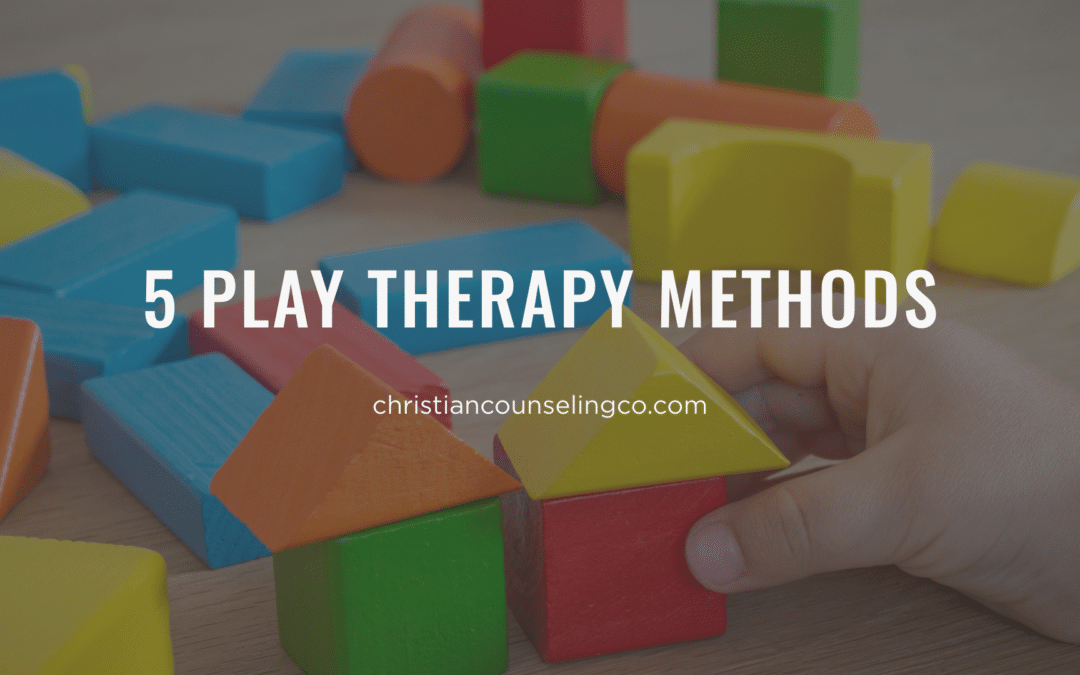Have you ever wondered how Christian play therapists work with children? Here is a list of 5 Play Therapy Methods:
“Almost all creativity involves purposeful play.” – Abraham Maslow
As you may have seen, play therapy is a newer service that we are excited about! We are especially thrilled to be able to offer it in a Christian setting. If you want to know more about the reasons why this form of counseling is helpful for children, head to our page about play therapy here.
The big takeaway is that play therapy helps children communicate concepts that they might not have the language for, or are difficult for them to express. Through play, an experienced play therapist can establish a relationship and help a child work through challenging situations and emotions.
This post is about some of the tools and toys that are used in play therapy counseling. We look at five types of play that contribute to the healing process through play therapy. The first four categories come from a resource called “Play Therapy for Very Young Children” edited by Charles E. Schaefer, Sophronia Kelly-Zion, Judith McCormick, Akiko Ohnogi.
5 Play Therapy Methods We’re at Cornerstone Christian Counseling:
1. Real-life/Family/Nurturing Toys: Used to act out relational issues and social conflicts.
Examples: Dolls, dollhouse furniture, play kitchen, medical kit, play money, costume jewelry
2. Acting Out/Aggressive Toys: Used to work out anger and violent thoughts and feelings in a safe environment where the counselor can help direct aggression constructively.
Examples: Handcuffs, balls, dartboard, drum, blocks, toy soldiers, inflatable punching toy, toy gun
3. Creative Toys: Used as a means for expression when words are difficult to find or if a child is unable to verbalize their emotion and experiences.
Examples: Colored chalk, play-doh, hand puppets, paper, colored pencils, markers, crayons, paint
4. Scary/Pretend/Fantasy Toys: Used as a metaphor for working through the effects of negative persons or circumstances contributing to poor mental health.
Examples: Snakes, ghosts, costumes, villain figurines
5. Sandtray: Goodtherapy.org defines this form of play therapy: “[Sandtray therapy] is often used with children, but can be applied to adults, teens, couples, families, and groups as well. Sandtray therapy allows a person to construct his or her own microcosm using miniature toys and colored sand. The scene created acts as a reflection of the person’s own life and allows him or her the opportunity to resolve conflicts, remove obstacles, and gain acceptance of self.”
Depending on the age and specific circumstances that are bringing a client in for therapy, the counselor assigned to work with them may use a combination of these toys or choose to focus on one category that is most therapeutically appropriate and beneficial.
Play therapy is an excellent option for various age groups! If you are interested in this specific service, please contact us at [email protected] or give us a call at 303-902-3068.


